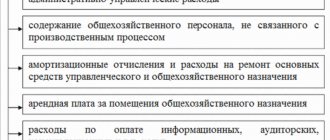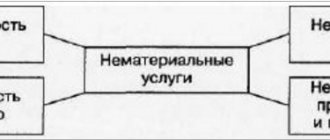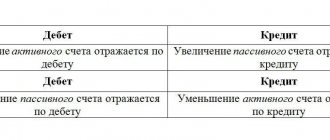Transportation expenses in accounting: entries and examples – Business Ideas
Transport costs are the costs of an enterprise directly related to the delivery of purchased goods to the counterparty.
The procedure for accounting for transportation costs for delivery in accounting is reflected in the accounting policy. The amount of transportation costs may be included in the price of the goods or issued as a separately provided service.
Depending on the method of accounting for transportation costs, the corresponding transactions are generated.
Features of accounting for transportation costs
Transportation costs (otherwise known as transportation and procurement costs) include the following costs:
- Payment of transportation costs for delivery of goods;
- Payment for loading and unloading operations;
- Temporary storage fee.
Payment options for the cost of goods delivery services:
- The company includes the cost of delivery in the price of the goods;
- Refund of the amount spent by the seller in accordance with the concluded agreement with the buyer;
- The buyer pays transport costs separately;
- They pay for services in accordance with the concluded agreement for the delivery of goods with the transport company.
Example 1. The amount of transportation costs is included in the price of the goods
The organization VESNA LLC purchased equipment for a total amount of 531,000.00 rubles, incl. VAT - RUB 81,000.00 Transport costs amounted to RUB 29,500.00, VAT RUB 4,500.00. According to the accounting policy of the enterprise, transportation costs are included in the cost of goods. Account 15 is used to form the cost price.
According to paragraph 6 of PBU 5/01, delivery costs may be included in their actual cost. The actual cost is written off to account 41 “Goods”.
The accounting records reflect transportation costs for delivery; we make the following entries:
| Debit Account | Credit Account | Transaction amount, rub. | Description of transaction posting | A document base |
| 15 | 60 | 450 000,00 | The purchase price of purchased equipment is taken into account | Consignment note (TORG-12), Invoice received |
| 19 | 60 | 81 000,00 | VAT on purchased equipment has been taken into account | |
| 15 | 60 | 25 000,00 | Transport costs included | |
| 19 | 60 | 4 500,00 | VAT on transport costs included | |
| 41 | 15 | 475 000,00 | The actual cost of purchased equipment is taken into account |
Example 2. The amount of transportation costs is included in sales expenses
VESNA LLC purchased goods for a total amount of RUB 413,000.00, incl. VAT 63,000.00 rub. Transportation costs amounted to RUB 20,060.00, incl. VAT RUB 3,060.00 According to the accounting policy, transportation costs are included in selling expenses. The cost price is formed on account 41.
Get 267 video lessons on 1C for free:
- Free video tutorial on 1C Accounting 8.3 and 8.2;
- Tutorial on the new version of 1C ZUP 3.0;
- Good course on 1C Trade Management 11.
According to paragraph 13 of PBU 5/01, transportation costs are included in sales costs.
https://www.youtube.com/watch?v=Ng4Ifp0Mgog
In accounting, entries for transportation expenses are generated:
| Debit Account | Credit Account | Transaction amount, rub. | Wiring Description | A document base |
| 41 | 60 | 350 000,00 | The purchase price of goods is taken into account | Consignment note (TORG-12), Invoice received |
| 19 | 60 | 63 000,00 | VAT on purchased goods has been taken into account | |
| 44.01 | 60 | 17 000,00 | Transport costs included | |
| 19 | 60 | 3 060,00 | VAT on transport taxes included |
Example 3. Delivery of goods by transport services sells goods to the buyer for a total amount of 885,000.00 rubles, incl. VAT RUB 135,000.00 According to the accounting policy, the cost of transport services is included in the price of the goods.
According to the terms of the contract, VESNA LLC must deliver the goods to the buyer. An agreement has been concluded with a transport company for the delivery of goods.
According to the terms of the agreement, the cost of services for delivering goods to the buyer is RUB 35,400.00, incl. VAT RUB 5,400.00
The accounting records reflect transportation costs under the service agreement; we make the following entries:
| Debit Account | Credit Account | Transaction amount, rub. | Wiring Description | A document base |
| 62 | 90.01 | 885 000,00 | Accounting for revenue from sales of goods | Consignment note (TORG-12), Invoice issued, Consignment note (form 1-T) |
| 90.03 | 68.02 | 135 000,00 | VAT charged on sales of goods | |
| 90.02 | 41 | 885 000,00 | Write-off of goods sold | |
| 44.01 | 60 | 30 000,00 | Accounting for the costs of delivering goods to the buyer by a transport company | Delivery agreement, Certificate of provision of transport services, Bill of lading, Bill of lading (form 1-T), Bill of lading (TORG-12) |
| 19.04 | 60 | 5 400,00 | Accounting for input VAT claimed by the transport company | Invoice received |
| 51 | 62 | 885 000,00 | Buyer payment for goods sold | Bank statement |
| 60 | 51 | 35 400,00 | Payment to the transport company for delivery of goods | Bank statement |
| 90.07.01 | 44.01 | 30 000,00 | Costs for delivery of sold goods are written off | Accounting information |
| 68 | 19 | 5 400,00 | VAT is accepted for deduction | Book of purchases |
Primary documents confirming transportation costs
Source: https://bzkey.ru/transportnye-rasxody-v-buxgalterskom-uchete-provodki-i-primery/
Concept and types of services
Services are a type of activity that does not have a material expression, the results of which are sold and consumed in the process of economic activity of the enterprise (Clause 5 of Article 38 of the Tax Code of the Russian Federation).
Services exist in a wide variety, in particular:
- informational;
- audit;
- transport;
- storage;
- consulting;
- real estate agents;
- communications;
- training, etc.
In accounting, all services are included in costs based on primary accounting documents.
The main primary documents confirming the execution of services are:
- Agreement.
- Certificate of completion of work or other document confirming acceptance of services.
IMPORTANT! The Ministry of Finance believes that if the agreement does not provide for a clause on drawing up an act, then it needs to be drawn up only in cases provided for by law (letter dated November 13, 2009 No. 03-03-06/1/750). The Civil Code obliges to draw up an act confirming the acceptance of work only in the case of a construction contract (Article 720 of the Civil Code of the Russian Federation).
The procedure for concluding and terms of the contract for the provision of services are regulated by Ch. 37–41, 47–49, 51, 52 Civil Code of the Russian Federation. The main actors in the contract are the contractor and the customer of the services. Let's look at the accounting procedures for each of them.
Transport costs in production to what account?
Transportation costs - posting to reflect them, types and accounting options. In this article you will find information on this topic.
Concept and types of transport costs
Tzr when purchasing materials
TZR when purchasing goods
Transport costs when selling goods or finished products
Results
Concept and types of transport costs
Most companies engaged in manufacturing or trading activities use the services of transport companies or have their own fleet of vehicles. When purchasing assets, the organization also incurs other associated costs, which, together with delivery costs, form transportation and procurement costs (TPC).
Each company is required to enter and approve in its accounting policy a list of expenses that should subsequently be attributed to TZR. To do this, you need to use legal acts from the following list:
- PBU 5/01 “Accounting for inventories” (approved by order of the Ministry of Finance of the Russian Federation dated 06/09/2001 No. 44n).
Clause 6 of this document shows the costs associated with the procurement and delivery of materials to the place of their use. This:
- costs associated with procurement and delivery;
- costs associated with maintaining enterprise personnel engaged in procurement and storage;
- transportation services for materials and equipment to the place of their use;
- interest accrued on loans from business partners;
- interest accrued as part of loans for the purchase of inventories, provided that these interests were formed before the accounting of inventories.
- Guidelines for accounting for inventories (approved by order of the Ministry of Finance of Russia dated December 28, 2001 No. 119n).
Clause 70 of the guidelines contains a list of material and equipment that can be included in the purchase of materials. This list includes the following types of expenses:
- for loading and transportation, if they are paid outside the basic cost of materials;
- for wages, social contributions and business trips of workers involved in the procurement and storage of materials;
- on the maintenance of actually used warehouse premises;
- payment for services of intermediary companies and individual entrepreneurs;
- to pay for storage services until the moment when the goods and materials arrive at the buyer;
- on interest accrued as part of loans for the purchase of inventories, if these interests were accrued before the moment of accounting for inventories;
- by the amount of losses en route, if their size is within the limits of the standards for natural loss;
- other expenses.
- All-Russian classifier of types of economic activity (approved by order of Rosstandart dated January 31, 2014 No. 14-st).
The classifier has a section “Transportation and storage”, it provides a list of transport services that you should focus on. The fact is that the Tax Code of the Russian Federation does not contain wording on what applies to this type of expense. Therefore, when organizing accounting and tax accounting, it is necessary to create and approve in the accounting policy an identical list of transport services.
It should be taken into account that the type of technical documentation is of great importance for accounting. Namely:
- Inventory related to the acquisition of materials;
- TZR due to the purchase of goods: in a trading company;
- non-trading company;
Let us note the features of accounting for each type.
Tzr when purchasing materials
PBU 5/01 determines that TZR are included in the actual cost of materials (clauses 6, 11). Paragraph 83 of the guidelines allows the use of three methods of recording TKR in terms of purchases. The company is instructed to choose one of the methods below and include it in the accounting policy of the enterprise.
- The 15th account “Procurement and acquisition of materials” is used for reflection.
In addition to the mentioned 15th account, with this method and when applying accounting prices, the 16th account “Deviation in the cost of material assets” is also used. Reference prices can be taken from the following categories:
- negotiated prices (they should not take into account associated costs for procurement and delivery);
- prices in force in previous periods;
- planned prices;
- average prices valid for a certain group of inventories.
In order to show what records are made when materials are received and written off, we will draw up the following table:
| The essence of the recording | Dt | CT |
| We record the cost of materials received based on the primary documents received from the partner (at purchase prices) | 15 | 60, 71, 76 |
| We record the technical requirements based on the primary documents received from the supplier (clause 85 of the guidelines) | 15 | 60, 71, 76 |
| We receive materials using discount prices | 10 | 15 |
| We write off the amount formed as a positive difference between the actual price and the accounting price | 16 | 15 |
| If a negative difference is formed, the entry will be reversed | 15 | 16 |
| We record the write-off of materials for production using the accounting price | 20, 23 | 10 |
| We record the difference between the actual and accounting value of the inventories transferred to the buyer, if this difference is positive. Otherwise, the same posting is reversed. | 20, 23 | 16 |
When forming the above table, in addition to those already described, the following accounts were used:
- 10th - “Materials”;
- 20th - “Main production”;
- 23rd - “Auxiliary production”;
- 60th - “Settlements with suppliers and contractors”;
- 71st - “Settlements with accountable persons”;
- 76th - “Settlements with various debtors and creditors.”
Paragraph 87 of the guidelines provides formulas used to calculate the percentage of write-offs of price deviations. The calculation procedure is as follows:
K = (Off0 + Off1) / (M0 + M1) × 100,
Where
K is the size of the deviation as a percentage;
Deviation0 - the size of the deviation at the beginning of the month (remainder);
Off1 - the size of the deviation accumulated during the month;
M0 - volume of materials at the beginning of the month in accounting prices;
M1 - volume of materials received during the month at accounting prices.
Off2 = K × M2,
Where
Off2 - the size of deviations that can be written off as expenses;
M2 is the volume of materials at accounting prices, which is written off as expenses.
- For reflection, a special sub-account is used on the 10th account “Materials”.
For such circumstances, we present the following tabular form for the records:
| The essence of the recording | Dt | CT |
| We reflect the cost of materials at purchase prices based on primary documents from the partner | 10 | 60, 71, 76 |
| We reflect the technical requirements on the basis of primary documents from the partner (clause 85 of the guidelines) | 10, sub-account “TZR” | 60, 71, 76 |
| We write off materials for production | 20, 23 | 10 |
| We write off inventory items in proportion to the cost of materials generated at the end of the month | 20, 23 | 10, sub-account “TZR” |
The above formulas can also be applied in this case. In this case, the selected calculation method should be approved in the accounting policy.
- TZR are directly included in the actual cost of materials.
This method is available only to those companies whose list of materials used is small and there are groups of materials that occupy a predominant volume in their total quantity. In other words, if the TRP falls on such inventories, then such expenses will be included in the cost of a unit of material.
Also look for information on materials accounting in the article “Accounting entries for materials accounting.”
TZR when purchasing goods
When purchasing goods, appropriate transportation costs can also be taken into account in different ways, which depend on what kind of activity the company is engaged in.
Thus, trading companies are allowed to choose an accounting method from the following list:
- TZR are included in the cost of goods (clause 6 of PBU 5/01): Dt 41, subaccount “TZR” Kt 60.
If account 15 “Procurement and acquisition of material assets” is used to record goods, then the entry will be as follows: Dt 15 Kt 60.
- TZR are included in the costs of selling goods (clause 13 of PBU 5/01), with the following costs:
- are scattered between those goods that are sold and those that remain in the warehouse (in the description of account 44, chart of accounts approved by order of the Ministry of Finance of the Russian Federation dated October 31, 2000 No. 94n),
- written off to cost in full: Dt 44 Kt 60.
At the end of the month, sales-related expenses can be written off to cost. The entry will be as follows: Dt 90, subaccount “Sale expenses” Kt 44.
The chosen accounting method must be included in the accounting policy of the enterprise.
In the above entries, in addition to those already mentioned, the following accounts are given:
- 02nd - “Depreciation”,
- 41st - “Goods”,
- 44th - “Sales expenses”,
- 70th - “Settlements with personnel regarding wages”,
- 69th - “Calculations for social insurance and security”,
- 90th - “Sales”.
If a partial write-off is used, then the accounting policy will need to include a method that the company will use when dividing inventory between goods sold and those that remained stored in the warehouse. The regulations do not provide guidance on which method to choose in different circumstances. That is, companies are free to choose it themselves.
However, you can get your bearings using the formula given in Art. 320 Tax Code of the Russian Federation:
K = (TP0 + TR1) / (T1 + T2) × 100,
Where
K is the average percentage of goods and materials that fell on inventory balances at the end of the month;
TP0 - transport costs, which correspond to unsold inventory balances at the beginning of the month;
TP1 - transport costs incurred in the current month;
T1 - the cost of goods that have already been purchased and sold in the current month;
T2 - the cost of goods that were purchased but not sold at the end of the month.
TP2 = K × T2,
Where
TP2 - transport costs that fell on unsold inventory balances at the end of the month;
T2 - the cost of goods that have already been purchased but not sold at the end of the month.
Non-trading organizations have the right to take into account transportation costs as sales expenses. This definition is contained in paragraph.
227 guidelines for accounting for inventories, approved by Order of the Ministry of Finance of Russia dated December 28, 2001 No. 119n.
Non-trading organizations should be considered those companies that, in addition to trading operations, carry out other types of economic activities.
Companies included in this category have the right to choose whether to spread costs between the cost of goods already sold and inventory balances. However, there are also some recommendations in this regard, contained in paragraph 228 of the guidelines. It is proposed to distribute expenses if:
- TZR exceed 10% of sales revenue,
- TZR is uneven throughout the year.
In addition, TZR are also taken into account in the actual cost of acquired fixed assets, as read in the article “Rules for keeping records of investments in non-current assets.”
Transport costs when selling goods or finished products
The following options for accounting for delivery costs are possible:
- If the delivery price is included in the price of the product.
Source: https://f-52.ru/transportnye-rashody-v-proizvodstve-na-kakoy-schet/
Results
Accounting for services is based on accounting standards. The accounting methodology is specific and depends on the specific type of activity of the performing company. Revenue from the provision of services is included in income from ordinary activities. Expenses are recorded as costs from normal activities in cost accounts. In the production of material assets necessary for the performance of services, finished product release account 43 is used.
For the customer, the cost of services is recognized as an expense and is charged either to cost accounts or to an increase in the purchase price of assets for which these services are related.
You can find more complete information on the topic in ConsultantPlus. Full and free access to the system for 2 days.
Transport expenses in accounting: postings, reimbursement of expenses, write-off of expenses
Enterprises whose specialization is based on selling their own products not directly, but through contractors, must independently take care of how their goods will get to retail outlets or warehouses of partner companies.
In this case, the sale of the goods has already been completed, and ownership passes to the next owner, but the transportation or delivery of products must be agreed upon in advance and all requirements and conditions must be specified when preparing documents for the transaction.
So, if the supplier pays all transportation costs, then a special accounting account must be opened, which will keep track of all expenses for unloading work and costs for transporting products.
Primary documents for accounting services
In tax accounting, services are also included in costs and reduce taxable profit, subject to economic justification and the availability of primary accounting documents (Article 252 of the Tax Code of the Russian Federation). The exception is standardized expenses, when only part of the costs according to the rate specified in tax legislation is included in the base when calculating profits.
As noted above, most often, to confirm the fact that the service has been provided, a certificate of completion of work is drawn up. The form of the act is not contained in the album of unified forms (with the exception of the KS-2 form); it is developed and agreed upon by the parties to the agreement independently, taking into account the conditions of each specific transaction. In this case, the form must contain the mandatory details listed in Art. 9 of the Law “On Accounting” dated December 6, 2011 No. 402-FZ:
- Name and date of the document.
- The name of the company that prepared the document.
- The name of the work performed, indicating the cost and quantitative characteristics.
- Signatures of the parties indicating the positions and names of the signatories.
For a sample of filling out the acceptance certificate for completed work, see the material “Acceptance certificate for completed work - sample.”
The fact of provision of construction services is confirmed by an act in the KS-2 form.
The algorithm for filling out this document is given in the article “Acceptance certificate for completed construction work - sample”.
When providing transport services by a carrier company, in addition to the work completion certificate, there must be transport documents. Such documents, in particular, include invoices.
IMPORTANT! Since 2013, unified forms are not mandatory for use; organizations have the right to develop them independently.
The procedure for accounting for transportation costs is described in detail in the publication “Transportation costs are charged to the buyer’s account - posting.”









